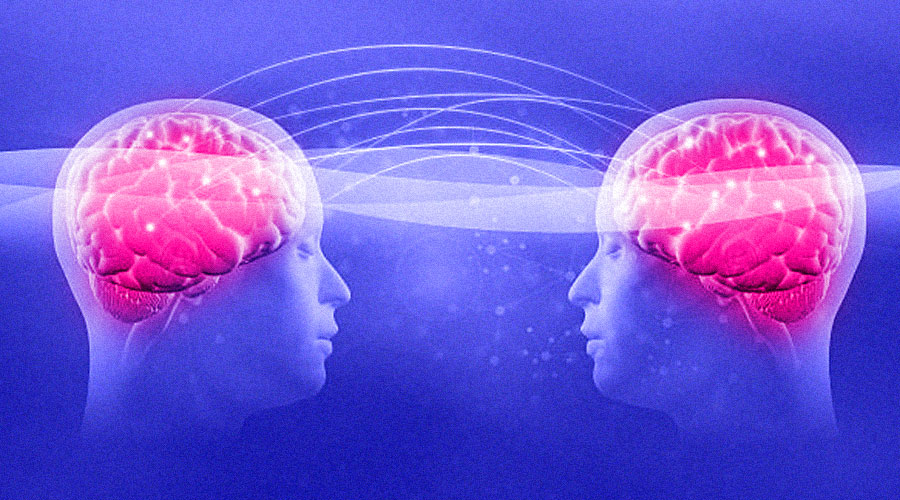
The world-class AI research and development teams at SingularityNET are continuously expanding the boundaries of machine intelligence and capabilities, to serve human needs and solve human challenges. Innovations include pushing the boundary of collaborative AI process creation through AI-DSL, biomedical AI analysis tools, decentralization-enabling tools such as reputation, and most importantly the open source AGI framework system OpenCog Hyperon.
SingularityNET’s researchers and staff periodically publish in global academic journals and scientific publications. We are committed to making our research and findings accessible to the global scientific communities.


OpenCog Hyperon is a core project in SingularityNET’s mission to develop beneficial Artificial General Intelligence. Hyperon aims to implement a complete, scalable, and open-source Artificial General Intelligence system based on the principles of OpenCog, also initiated and led by Dr. Ben Goertzel.
Hyperon consists of two core software components: 1) Atomspace: a hugely scalable distributed neural-symbolic knowledge metagraph 2) The MeTTa programming language (gradually probabilistically dependently typed). Hyperon is composed of higher-level AI systems built on top of the core components such as Probabilistic Reasoning (Probabilistic Logic Networks, dependently typed probabilistic programming), Evolutionary Learning (MOSES), Economic Attention Allocation Network (ECAN), Machine Learning strategies and, potentially, other proprietary AI systems.
MeTTa forms the ‘universal translator’ that enables this wide range of AI systems to dynamically collaborate based on the common knowledge base of Atomspace (and enhance the knowledge base while doing so). MeTTa’s capability to support neural-symbolic reasoning and handling uncertainties (using probabilistic reasoning), makes it the strong and versatile tool that is crucial in our pursuit to develop AGI. With this open architecture that embraces very different AI strategies, OpenCog Hyperon aims to build an AGI system that is much greater than the sum of its (already) impressive parts.
A language of the cognitive architecture of OpenCog Hyperon. The MeTTa interpreter chains queries to the Atomspace metagraph using provided equalities and implements functional, logic, and probabilistic programming paradigms in this unified way. It functions as the universal translater of the wildly variating components that Hyperon is made of and it is the glue that holds everything together. Just as each AI component in Hyperon can use its own restricted flavour of MeTTa based functions, MeTTa can also be used as a foundation for the creation of other Domain Specific Langages or even Low Code / No Code user interfaces for specific applications on the Cardano Blockchain.
A kind of graph that makes optimal use of the blockchain space to create a scalable and fast knowledge base. The atoms can represent not only “data”, but also “procedures” and atoms can be assigned fleeting, changing values to indicate grades of truth, or to hold other kinds of transient data. All this makes the graphs not just a store of data, but captures subtle relations between data and allows graphs to become executable programs in itself.
A new approach to program evolution, based on representation-building and probabilistic modeling. MOSES has been successfully applied to solve hard problems in domains such as computational biology, sentiment evaluation, and agent control. Results tend to be more accurate, and require less objective function evaluations, than other program evolution systems, such as genetic programming or evolutionary programming . Best of all, the result of running MOSES is not a large nested structure or numerical vector, but a compact and comprehensible program written in a simple Lisp-like mini-language.
ECAN weights pieces of knowledge relative to one another, based on what has been important to the system in the past and what is currently important. Attention allocation has several purposes: (1) Understanding what knowledge should be stored in memory, what should be stored locally on disk, and what can be stored distributed on other machines. (2) To guide the forgetting process. (3) To guide reasoning carried out by PLN.
A novel conceptual, mathematical, and computational approach to uncertain inference. In order to carry out effective reasoning in real-world circumstances, AI software must robustly handle uncertainty. However, previous approaches to uncertain inference do not have the breadth of scope required to provide an integrated treatment of the disparate forms of cognitively critical uncertainty. Going beyond prior probabilistic approaches to uncertain inference, PLN is able to encompass within uncertain logic such ideas as induction, abduction, analogy, fuzziness and speculation, and reasoning about time and causality.
Atomspace is a very complex and dynamic system that will be more accessible to humans with good visualisation tools. SingularityNET is working on tools to support the following use cases: (1) See live changes to the Atomscpace when running some demos and testing with inputs, so they will get a better intuitive understanding of how the Atomspace works. (2) Focus on specific subsets of the graph and view structures and relations. (3) Drill down to the atom level and navigate through the graph on that level. (4) Monitor progress of the data-processing pipeline on a dashboard.

Biotech firm Genescient Inc has researched ‘Methuselah flies’ increasing their lifespan 8 times through consistent breeding. The flies’ increased lifespan is explained by a large number of systematic genetic variations. SingularityNET and Rejuve.AI have launched a partnership with Genescient aimed at using advanced machine learning and machine reasoning methods to carry out transfer learning from the Methuselah fly genome to the human genome. The goal is to gain new information regarding gene therapies, drugs or nutraceutical regimens for prolonging healthy human life.

Lorem ipsum dolor sit amet, consectetur adipiscing elit, sed do eiusmod tempor incididunt ut labore et dolore magna aliqua. Leo vel orci porta non pulvinar neque. Vestibulum lectus mauris ultrices eros in cursus turpis. Dictumst vestibulum rhoncus est pellentesque elit ullamcorper. Sed viverra tellus in hac habitasse platea dictumst. Dolor purus non enim praesent elementum facilisis leo. Vulputate enim nulla aliquet porttitor. Nulla facilisi nullam vehicula ipsum.
Tincidunt augue interdum velit euismod in pellentesque. Eget mi proin sed libero enim sed faucibus turpis in. Massa placerat duis ultricies lacus sed turpis tincidunt id aliquet. Duis at tellus at urna condimentum mattis pellentesque id. Risus sed vulputate odio ut.

The concept of humanoid AGI is an ambitious goal in the field of artificial intelligence, aiming to create recognizably human-like agents (physical robotics or virtual avatars) that can think, learn, reason, and perform tasks in a manner similar to humans. By having a human-like form or behavior, humanoid AGI has two distinct advantages. First, such AGI will naturally understand human perspectives and human limitations – it will need to express emotion with facial and vocal indicators, rather than text descriptions. Second, humanoid AGI are naturally more relatable to humans, tending to instinctively inspire trust, empathy, and connection in the humans they interact with – thereby bridging the divide between AI and humanity.
Driven by OpenCog Hyperon algorithms, humanoid AGI is already making strides toward “coming to life.”
Minecraft and other such metatarsal worlds have a ready built system of physics and agent interactions, which quickly lend themselves to benchmarking and testing agent learning systems. OpenCog researchers are actively exploring neural symbolic architecture implementations and temporal reasoning within Minecraft environments.
Emotional experience and expression of embodied agents controlled by OpenCog - Robots and Avatars with the ability to express emotion via its choice of animations, modulation of animations, and tone of voice; and to “experience” emotions via (in the OpenCog system controlling it) modulating its action selection and cognitive processes based on emotional factors.

Tononi Phi, Created by psychiatrist and neuroscientist Giulio Tononi, is an evolving mathematical system for studying and quantifying consciousness. Phi is based on the number and quality of interconnections a given entity has between bits of information. The resulting number — the Phi score — is supposed to correspond directly to how conscious the system is. The premise is that the more connections there are, the more conscious an entity becomes.
Phi and additional measures will be used by SingulairtyNET to guide research and parameter tuning to encourage phenomena to emerge simply via the system’s complex dynamics. Phi and cognitive synergy, along with decentralization and democratization will all serve to help guide our efforts towards achieving true beneficial and benevolent artificial general intelligence.

In a Joint Venture with Simuli, SIngularityNET is developing dedicated hardware to increase the speed of openCog Hyperon Pattern Matching. A metagraph-pattern-matcher chip (MPMC) has been designed and will be integrated in an overall ‘AGI board’. This is being worked on by Simuli as part of an overall “AGI board” initiative.

An AI, even when applied to the abstract mathematics, seemingly disconnected from reality, needs to be able to think about itsef in order to efficiently solve problems. By doing so, it needs to think about reality, because it is, after all, running on a physical substrate. The art and science of such instrospective thinking is what inference control meta-learning aims to realize.
Inference control meta-learning works by turning reasoning inwards. As reasoning takes place, inference steps are recorded and treated as new axioms to form a theory of how reasoning takes place. The AI can then formulate conjectures such as “selecting this inference rule in that context is likely to bring me closer to proving that given theorem”. Turn these conjectures into theorems, and then use these theorems to guide its future reasoning, that is to better control the sequence of inference steps required to solve future problems. In the end, by turning inwards, the AI opens up to the outer reality that sustains its existence.
Progress has been ongoing with OpenCog Classic at a prototypical level. With OpenCog Hyperon, progress can move to a higher level by benefiting from a better language, MeTTa.
Lorem ipsum dolor sit amet, consectetur adipiscing elit, sed do eiusmod tempor incididunt ut labore et dolore magna aliqua. Ut enim ad minim veniam, quis nostrud exercitation ullamco laboris nisi ut aliquip ex ea commodo consequat.
Lorem ipsum dolor sit amet, consectetur adipiscing elit, sed do eiusmod tempor incididunt ut labore et dolore magna aliqua. Ut enim ad minim veniam, quis nostrud exercitation ullamco laboris nisi ut aliquip ex ea commodo consequat.
Lorem ipsum dolor sit amet, consectetur adipiscing elit, sed do eiusmod tempor incididunt ut labore et dolore magna aliqua. Ut enim ad minim veniam, quis nostrud exercitation ullamco laboris nisi ut aliquip ex ea commodo consequat.
We use cookies to provide you with the best possible experience. They also allow us to analyze user behavior in order to constantly improve the website for you. Cookie & Privacy Policy